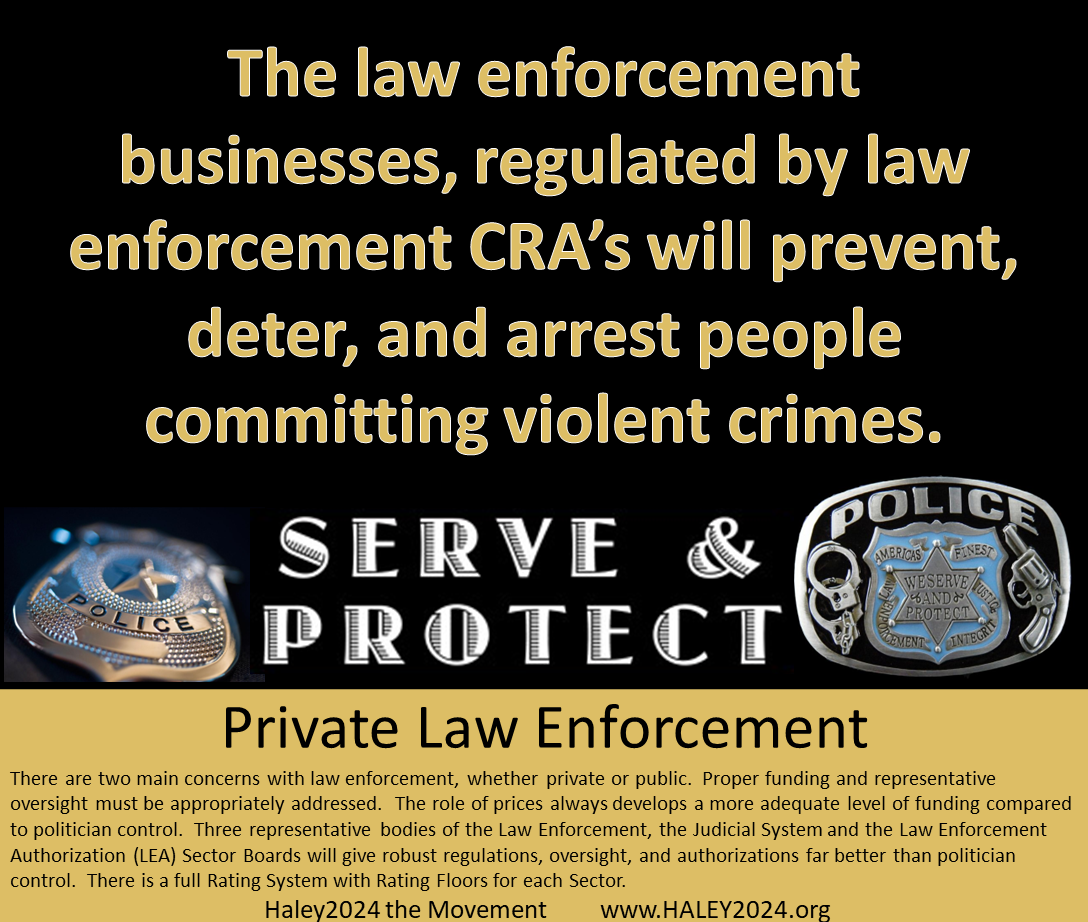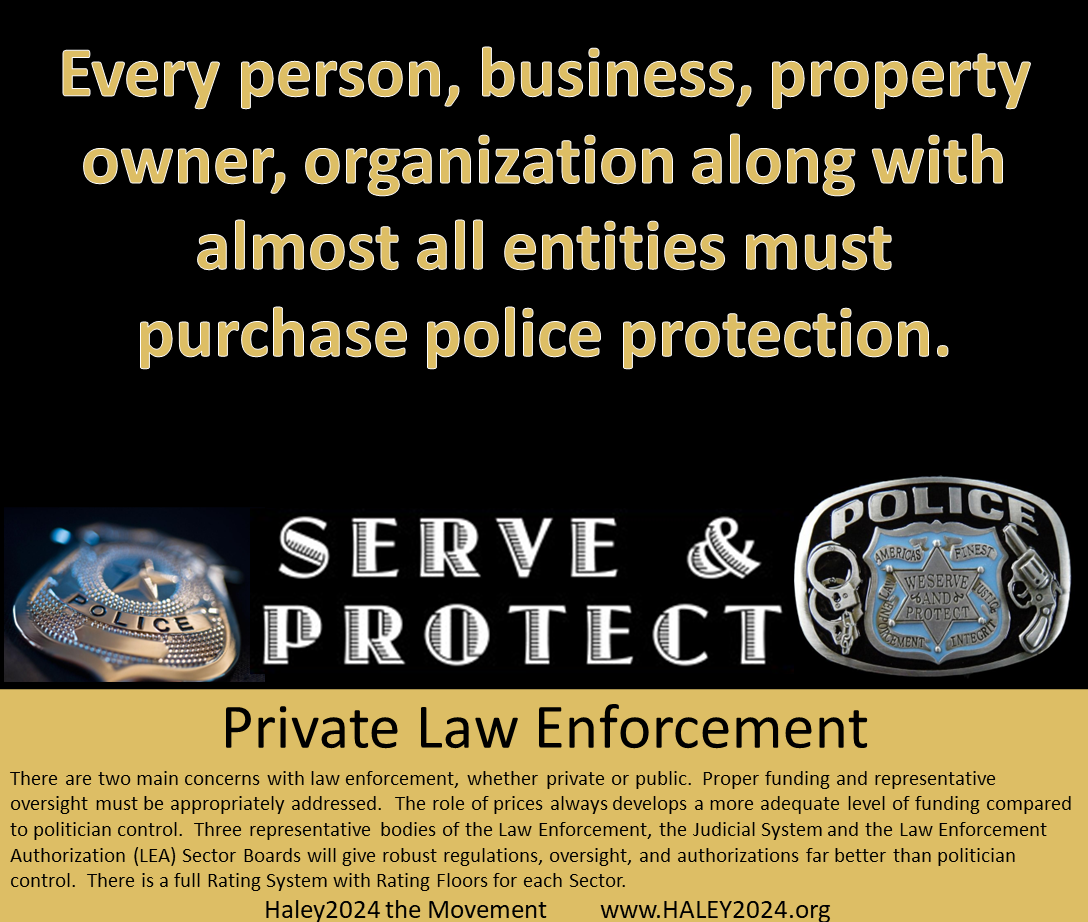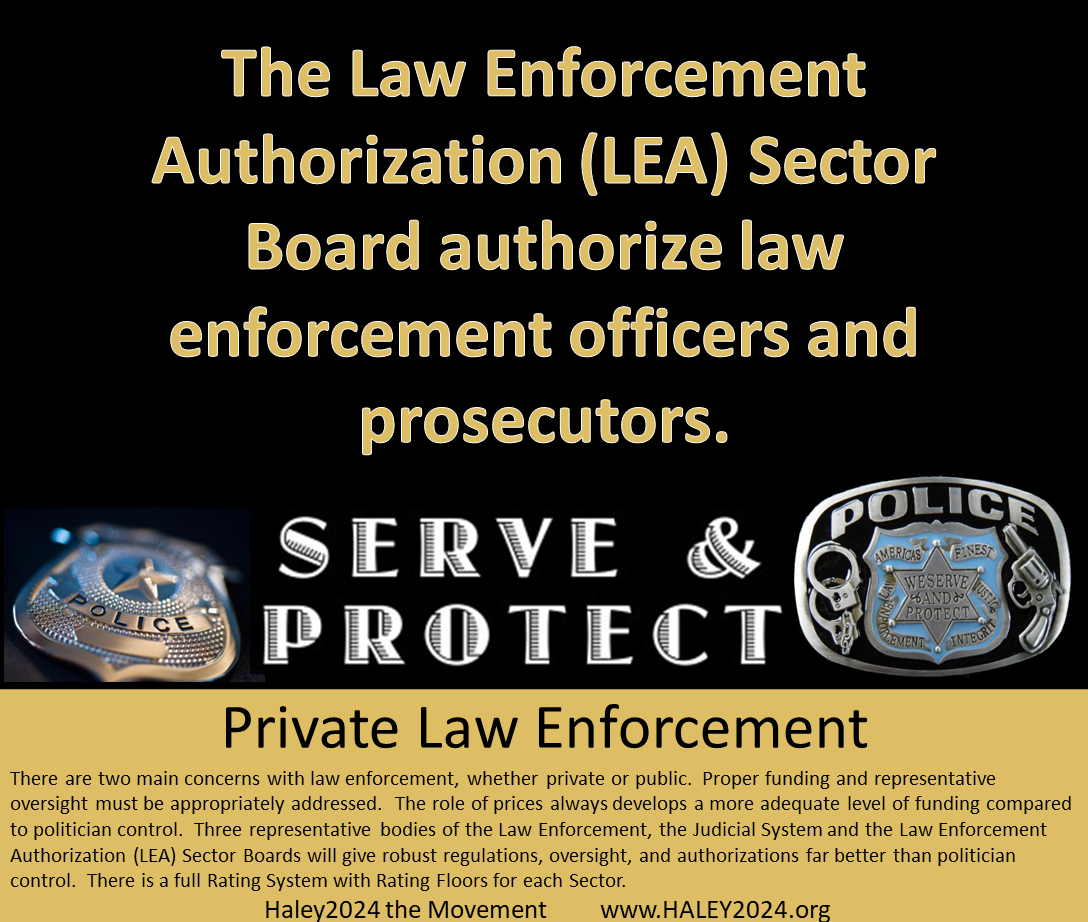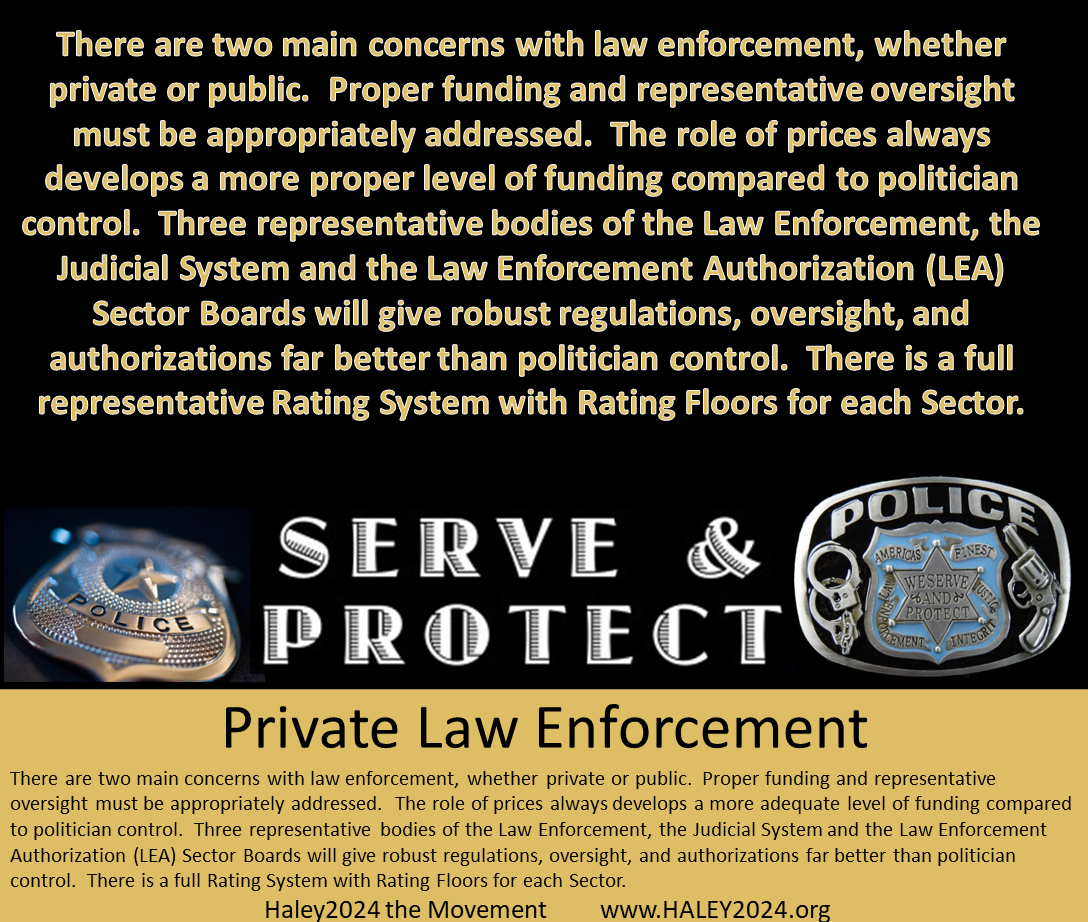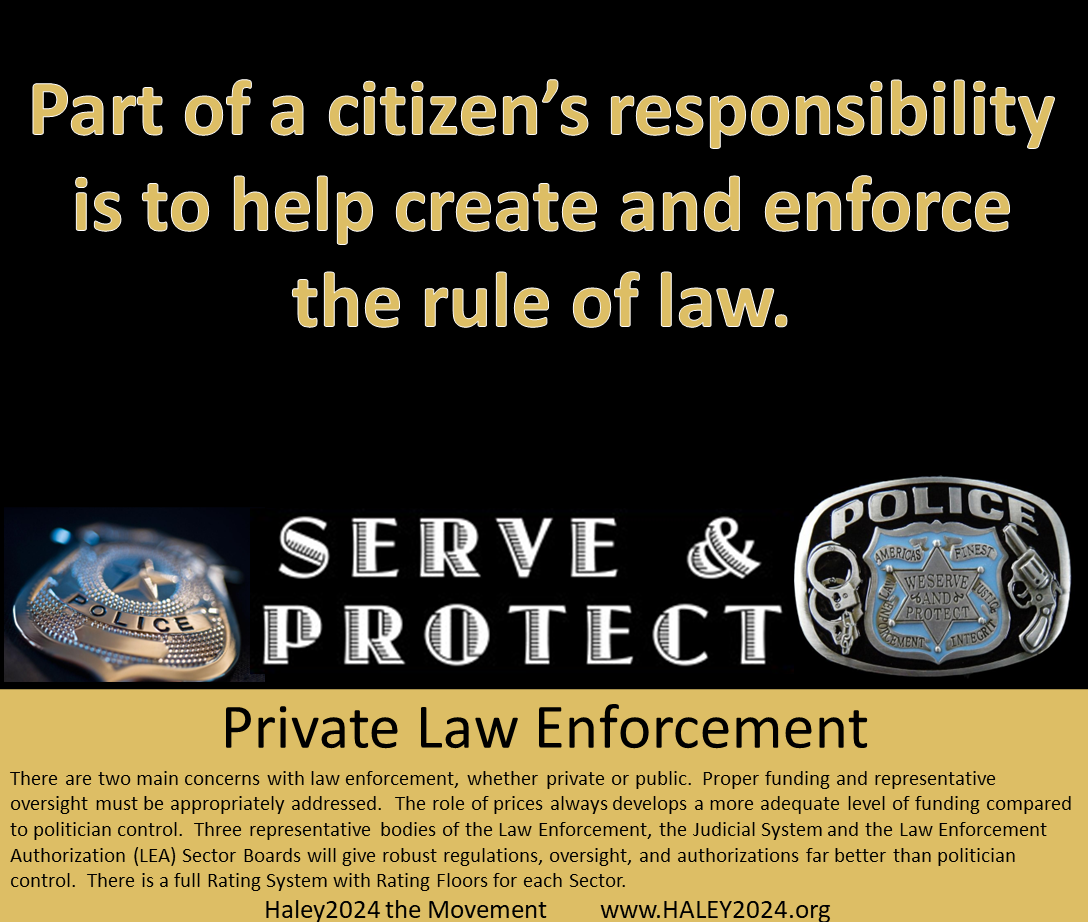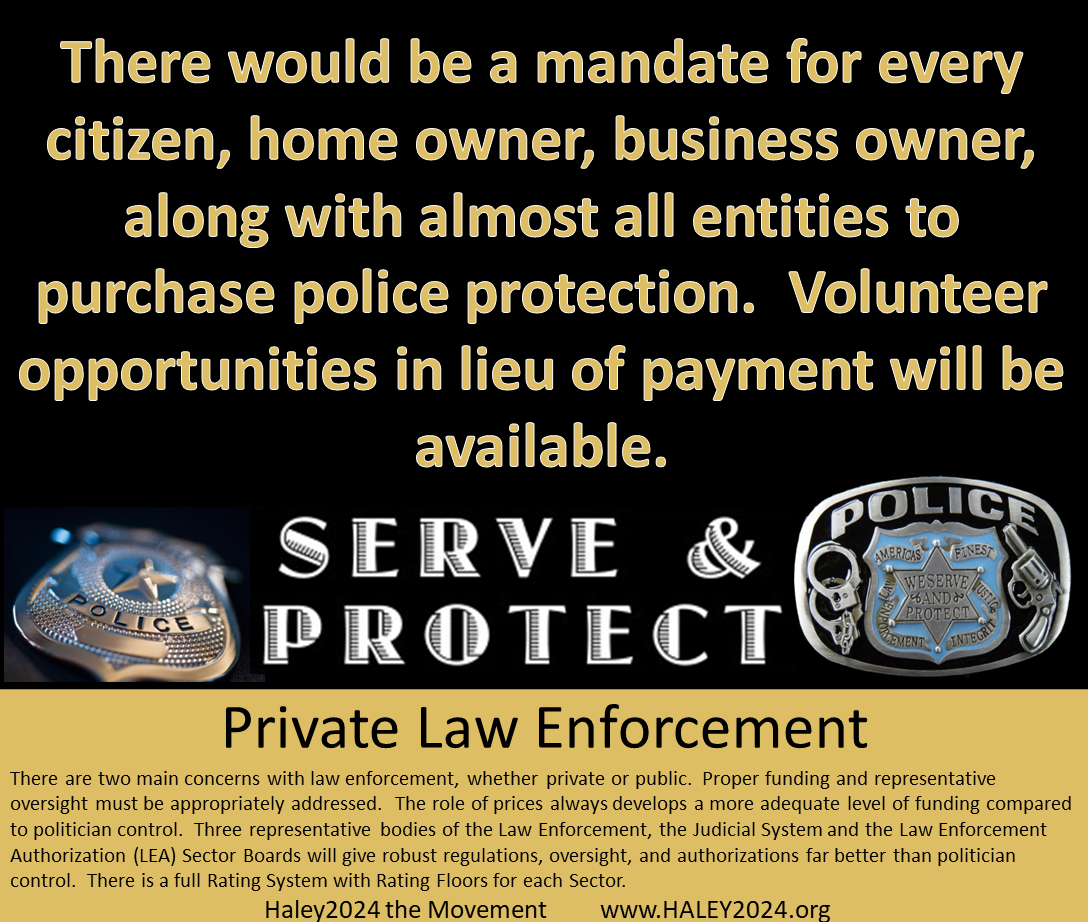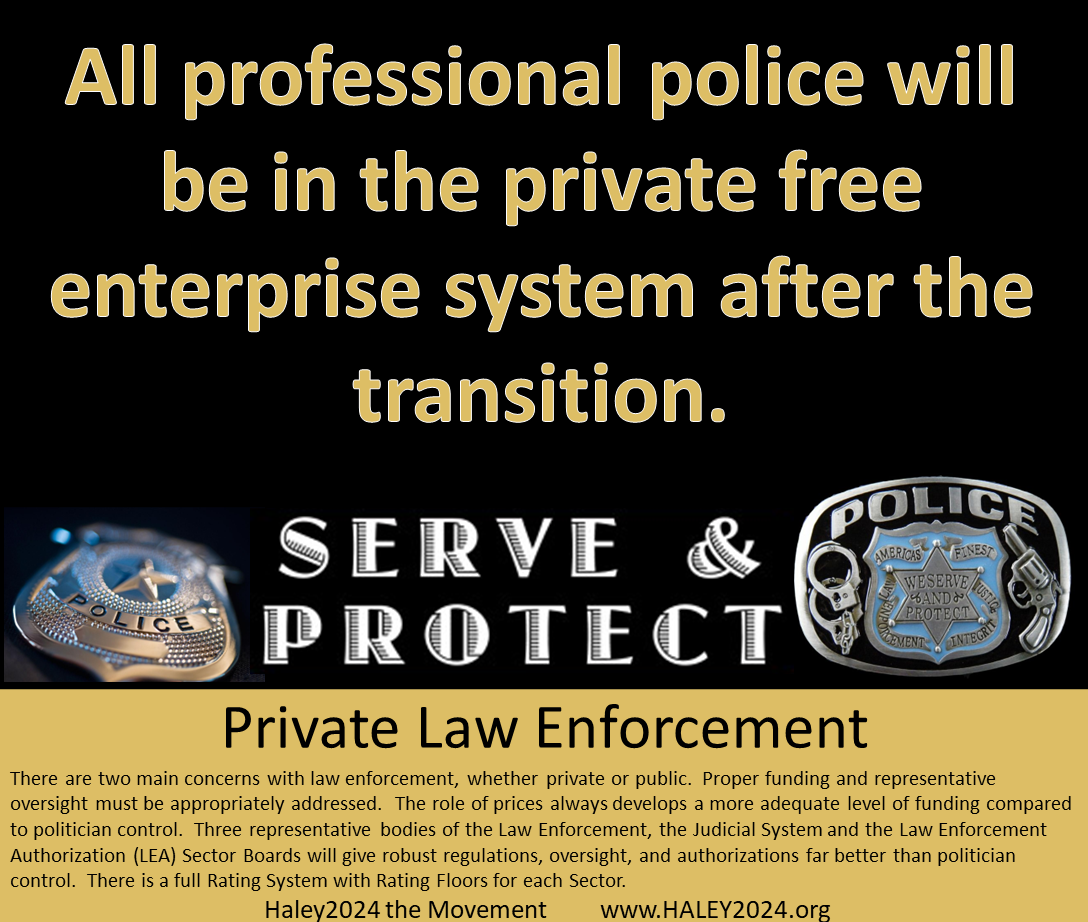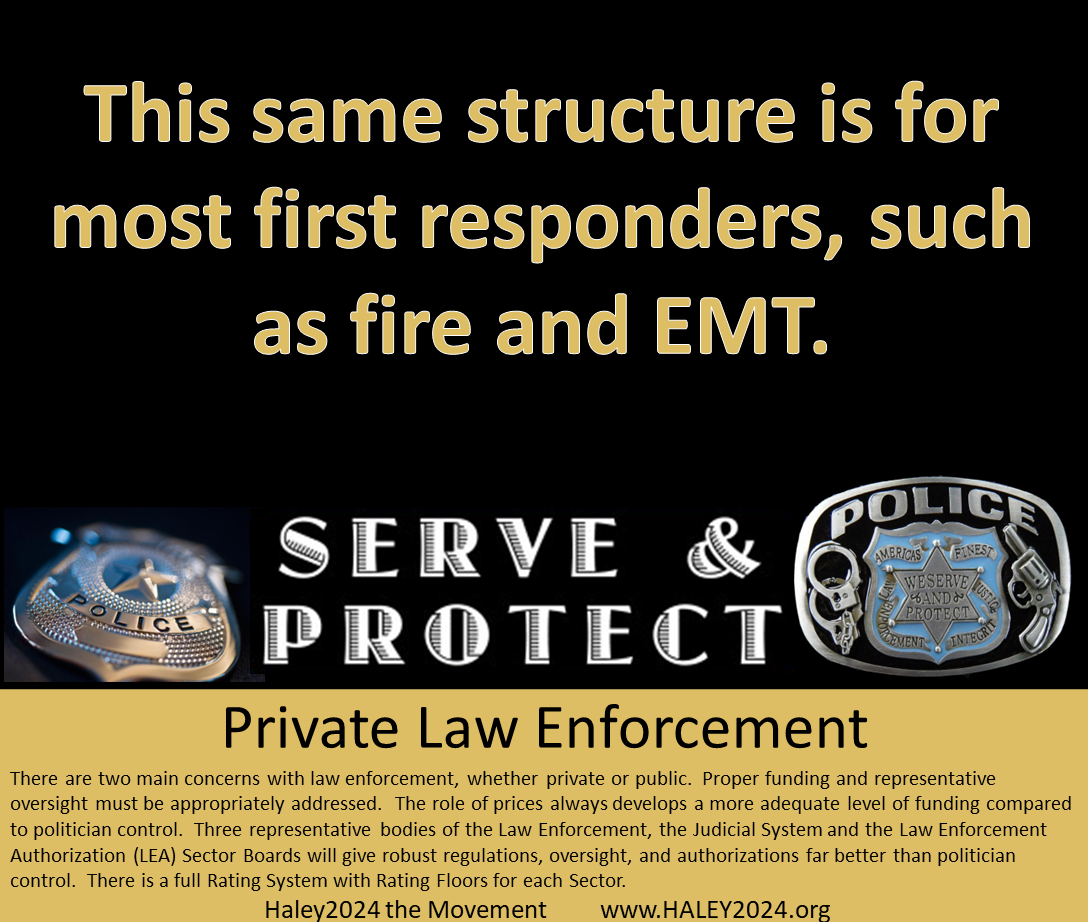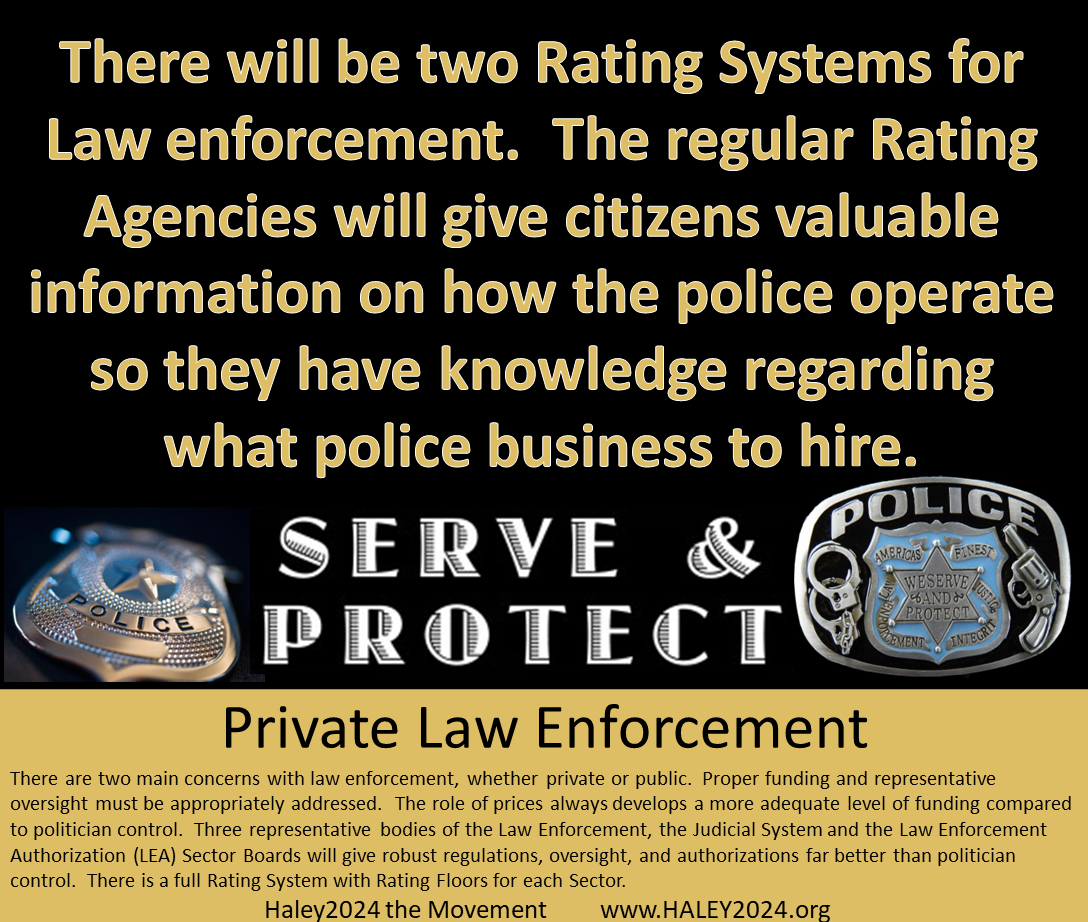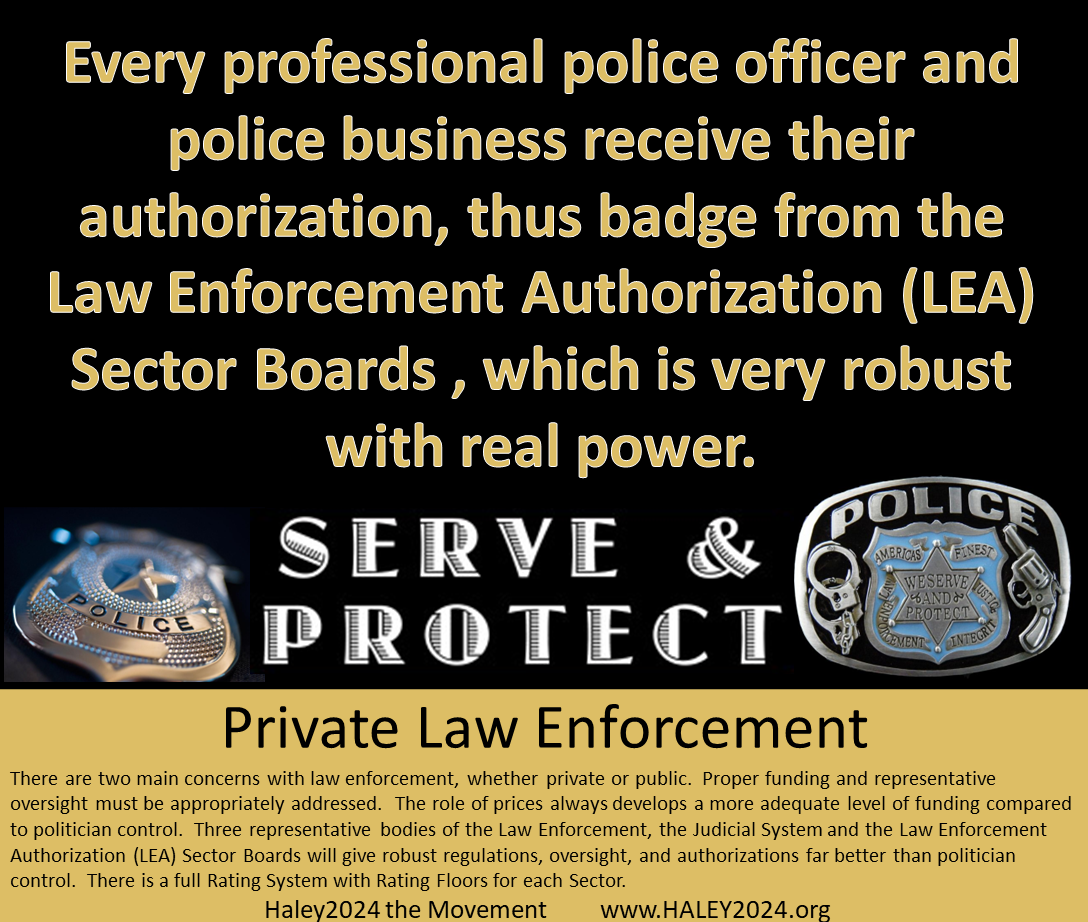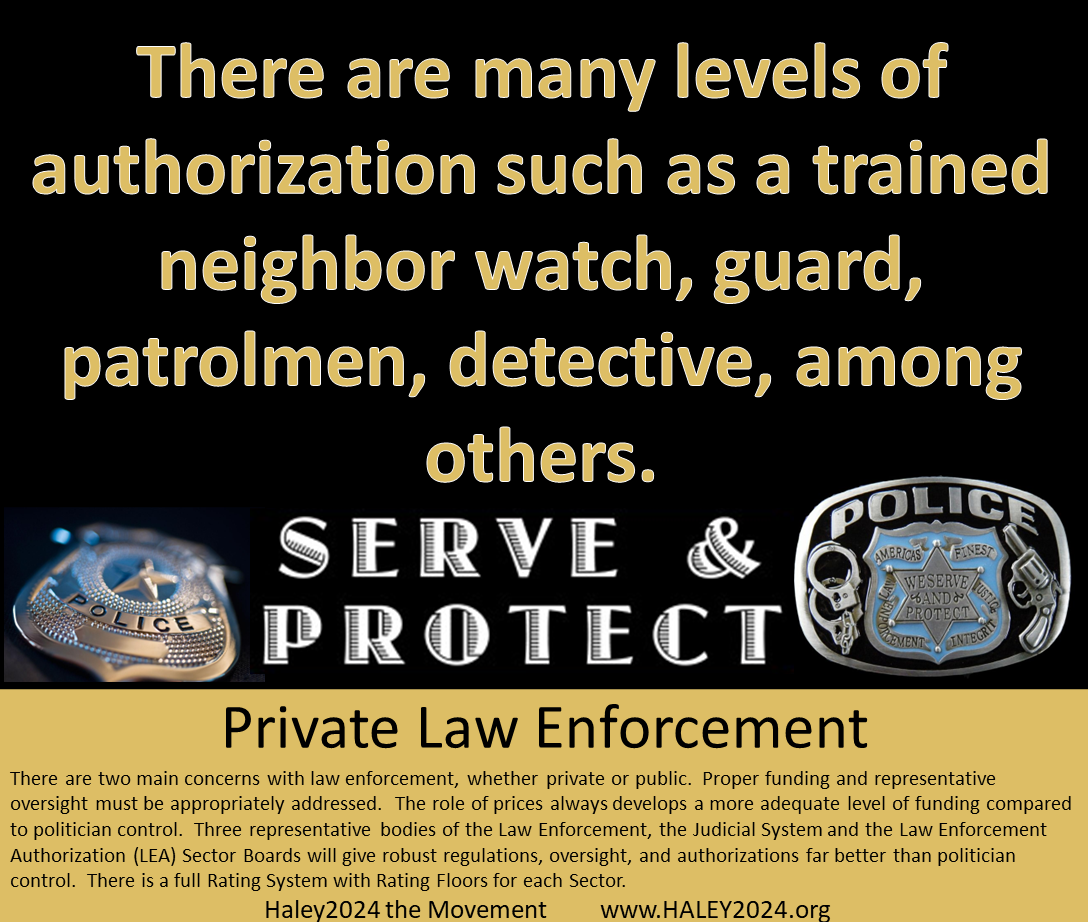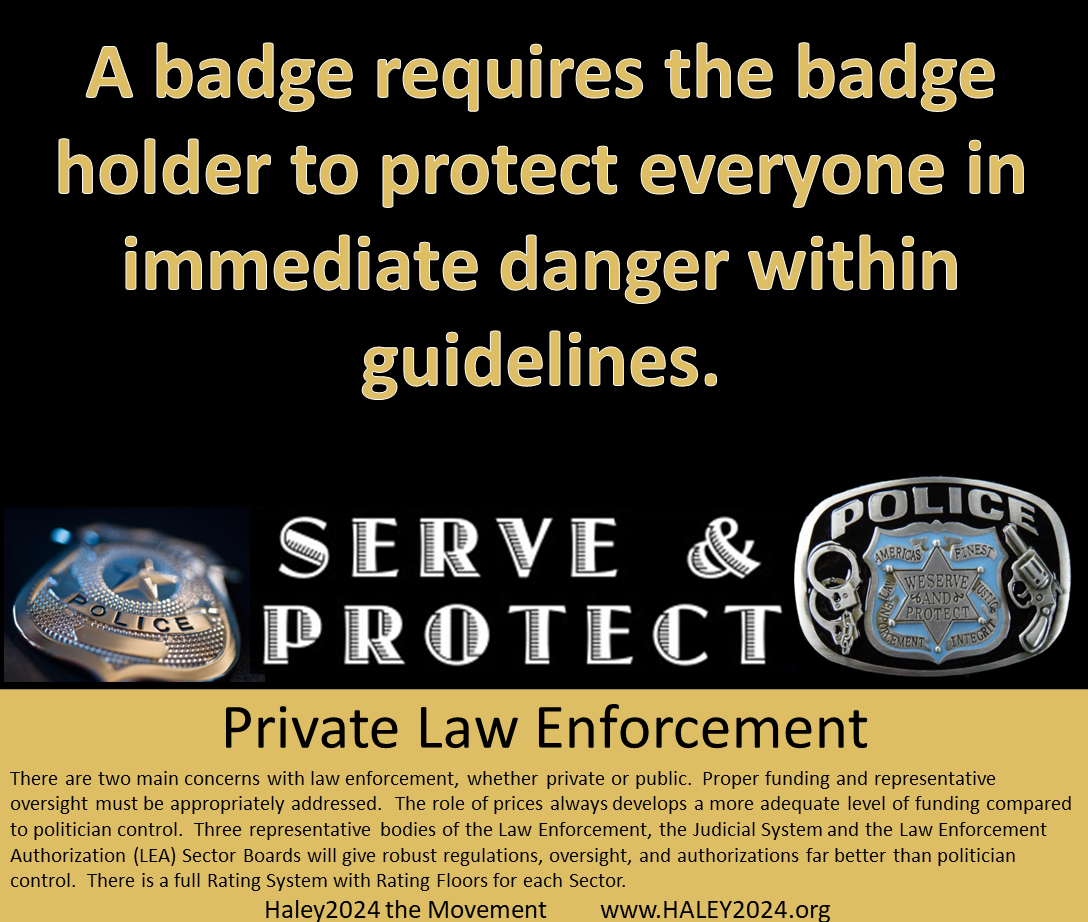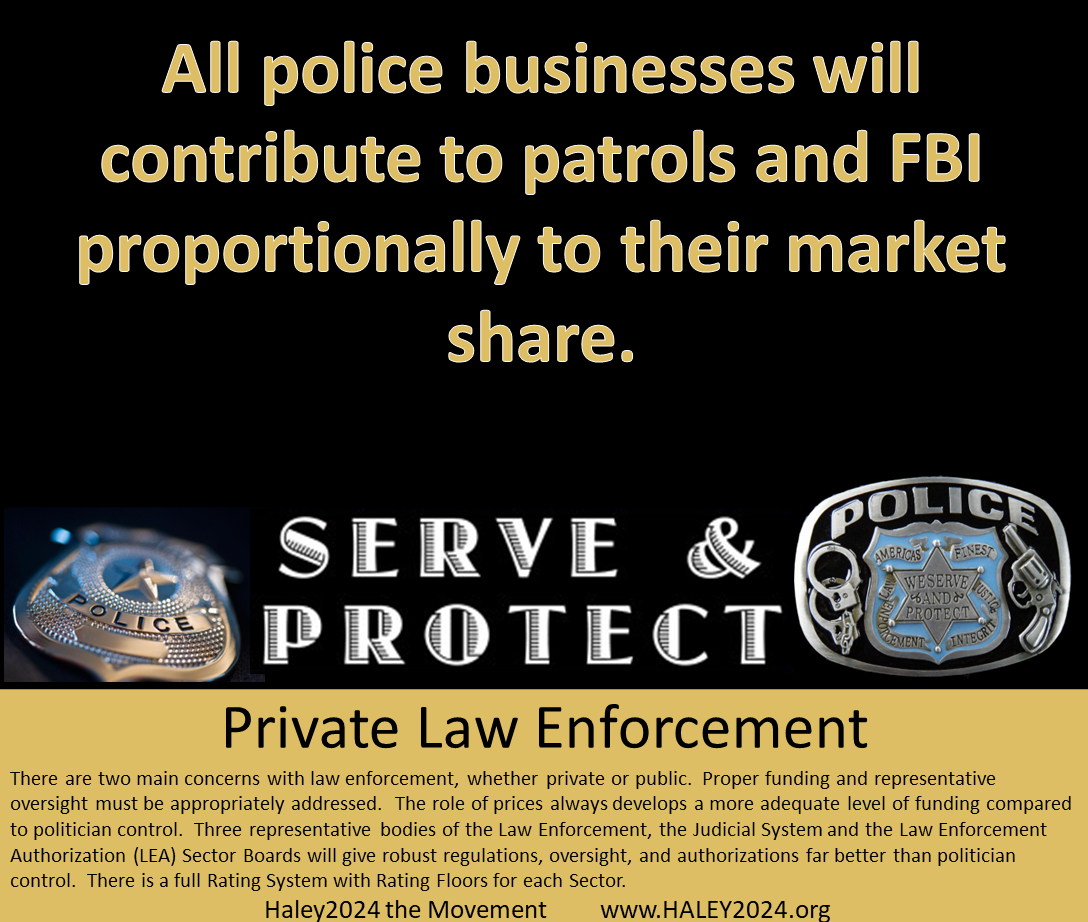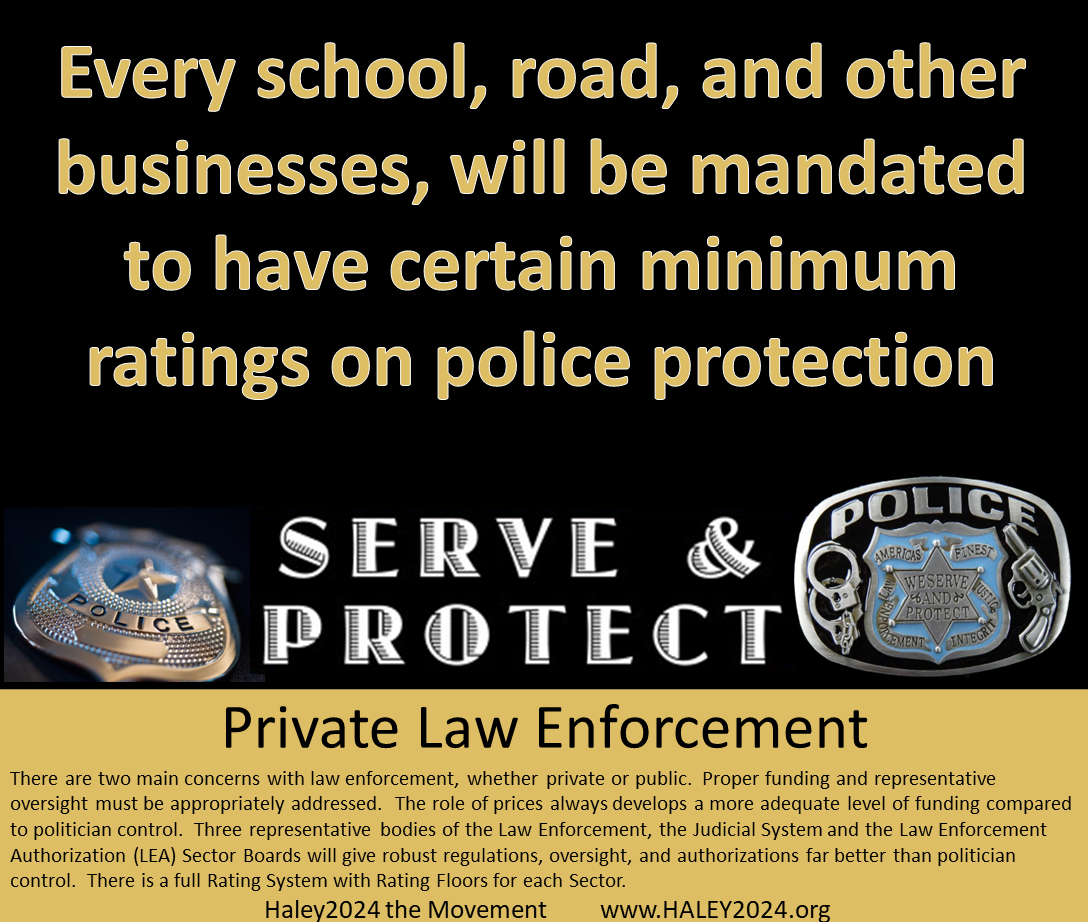| When Government law enforcement encounters a person or people they suspect of illegal wrongdoing, it is essential to have excellent protocols. Those protocols should be taught to every citizen in an effort to have police encounters go more smoothly and without breaking into violence or the citizens’ actions putting themselves in greater legal peril. Yes, there are protocols. However, they could be improved and are not taught to the citizens well enough. |
| The idea is to gather full-time, high-quality police, prosecutors, judges, and defense attorneys into one office to review video, evidence, and reports of police encounters. About half of these people will be exclusively in this role, and other people will do a rotation one day a month in this office. |
| All four vocations examine police encounters from a different perspective. The four people discuss and write reports for all involved in the actual trial. These reports from the four vocations are easily publicly available online and used for the police academy and ongoing police training. Prosecutors, defense attorneys, and judges would also rely heavily on these reports for ongoing knowledge to do their respective jobs properly. |
| Given that technology allows for dashcams, police body-worn cameras, and real-time video chat, these four people from different occupations would be allowed to be at the police encounter in real-time. If a police official, prosecutor, judge, and defense attorney were to be dialed up during an encounter that met specific criteria, they could all evaluate, have a quick discussion, and then come with a unified voice to speak to the person being detained and give the police on the scene, clear instructions. |
| This four-occupation office has four distinct roles in creating justice. The police are the muscle that physically apprehends criminals and actively protects the public with weapons and manpower. Prosecutors protect the general citizens or society and are the lawyers who make legal cases presented in a court of law. The defense attorney protects the arrested citizen’s rights and interests in court. The judge oversees the whole operation and has essential powers. |
| I have watched hundreds of hours of police encounters on the internet. Often, the people stopped by the police are under a false understanding of how they are to act, their rights, and their obligations to obey lawful police commands, among other issues. Often, the person detained says they want a supervisor. Many arrested people would be more cooperative if a police supervisor, defense attorney, judge, and prosecutor gave the detained or arrested person clear instructions. This extra review curtails the police abusing their powers. |
| These high-quality police, prosecutors, judges, and defense attorneys would be government officials with real power relative to their official role. High quality would mean people in the top 10% of their profession in experience and accomplishments. One office means about four teams of four per office and several offices around the state. Each officer in all four professions would have one quality staff person and the necessary tech support. The rotating officials would pull from a greater pool from each occupation but still from the top 50% of their profession. |
| Legislative Aids from all legislators would be given many hours at these offices to explore proper legislation to address concerns and set protocols. Legislators need to write clear protocols in legislation, and these offices would be a great resource to understand the issues that need to be addressed. Of course, every elected official would be encouraged to spend quality time in these offices. |
| High schools should have considerable teaching on police encounters, such as an hour per month from various police, defense attorneys, judges, and prosecutors. While high schoolers will have instruction in their schools, these new offices should also have classroom space. Adults who need additional instruction because of how they behaved at police encounters might be ordered by a judge to take additional classes. |
| It would be wise for every police officer to have a desk cop in every police encounter doing real-time video chats with the law enforcement officer on the scene. They would use earbuds, body cameras, dashboard cameras, and GPS and have full computer access. The desk cop would be able to record and document everything in real time; they would be able to run background checks and license plates, among other tools. |
| The desk cop looking at the body cam and dash cams might pick up on threats quicker because they can rewind and pause the video, plus the dashcam is a different video. The desk cop could see multiple dash and body cams from different cops. The desk cop can do the background in real-time when the cop at the scene has other pressing matters. The desk cop would have a protocol on when to bring in the four-occupation office to assist. |
| This four-occupation office can be under the current government structure or under the Competitive Governance Structure. In both systems, there are the same four occupations. Under competitive governance, you will have additional personnel, such as Rating Agencies and Law Enforcement Authorization personnel. Competitive Regulatory Agencies (CRA’s) would staff offices based on their percentage of members. The detained or arrested citizen would have their defense attorney CRA to supply an official. |
